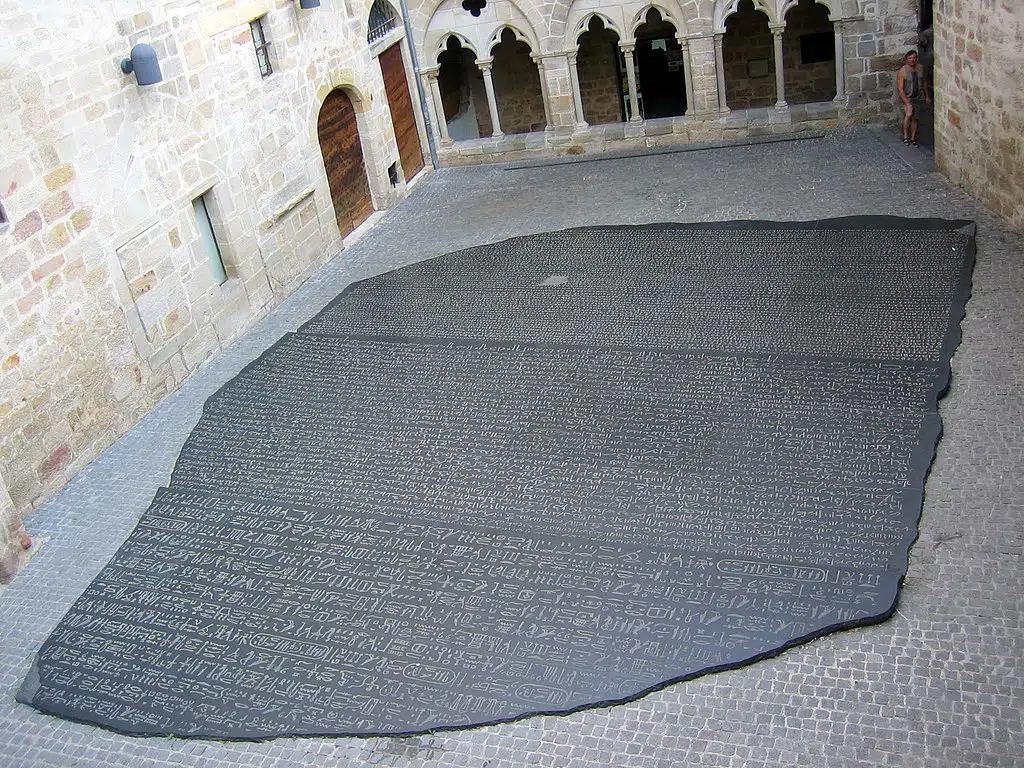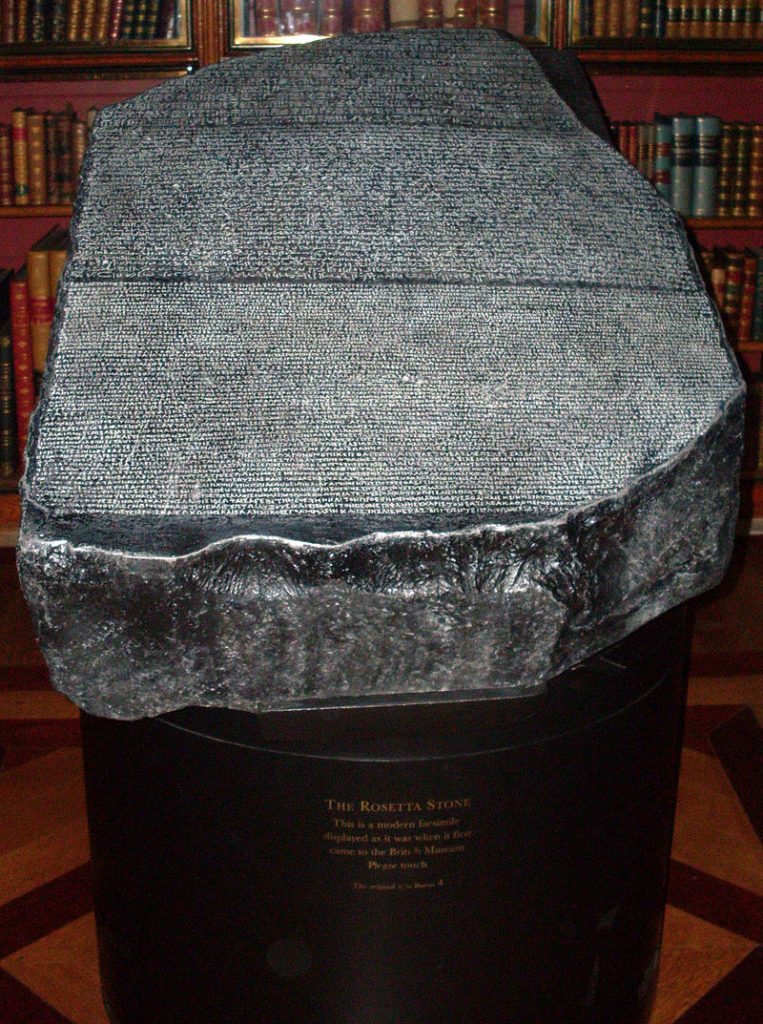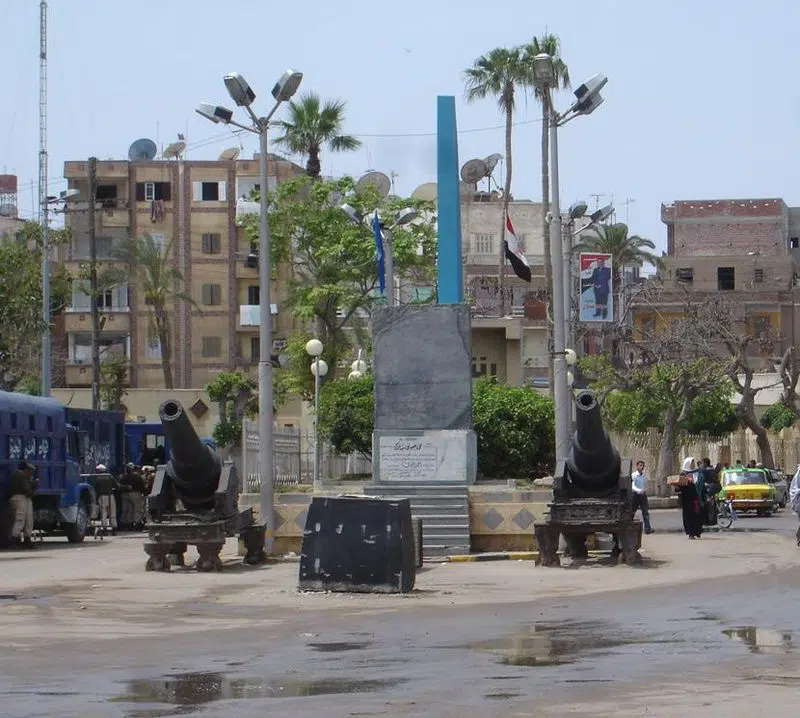
Recent research and excavations around the ancient Egyptian city of Thmuis, the place where the events recorded on the Rosetta Stone took place, is shedding new light on the turbulent events of the Ptolemaic era.
As everyone knows, the Rosetta Stone has gone down in history for being the missing linguistic link back to ancient Egypt, allowing us to finally be able to understand the meaning of the hieroglyphics that recorded the entirety of Egyptian history.
Until the writing on the Rosetta Stone was deciphered, no person on Earth knew the meanings behind Egyptian hieroglyphics because they had never been translated into Ancient Greek or any other language.
Inscribed thousands of years ago with the text of the Third Memphis Decree, which was crucially written in three different scripts, with Egyptian hieroglyphics at the top, Egyptian Demotic in the middle, and Ancient Greek at the bottom, the Rosetta Stone was discovered by French troops from Napoleon’s army when he invaded the country back in 1799.
The stone is believed to have originally been displayed within a temple, possibly at nearby Sais. It was most likely moved in late antiquity or during the Mameluk period and was incredibly eventually used as building material in the construction of Fort Julien near the town of Rashid (Rosetta) in the Nile Delta.
It was discovered there in July 1799 by French officer Pierre-François Bouchard during the Napoleonic campaign in Egypt.
Study of the decree was already underway when the first complete translation of the Greek text was published in 1803. Jean-François Champollion announced the transliteration of the Egyptian scripts in Paris in 1822; it took longer still before scholars were able to read Ancient Egyptian inscriptions and literature confidently, however.
How the Rosetta Stone was Decoded by Linguists
The most crucial steps in the decoding of the Rosetta Stone were the initial recognition that the stone offered three versions of the same text, which was realized immediately back in 1799, that the demotic text used phonetic characters to spell foreign names, which was realized in 1802, and that the hieroglyphic text did so as well, and had pervasive similarities to the demotic, as well, which linguists proved in 1814.
Later, linguists established that phonetic characters were also used to spell native Egyptian words in research that was undertaken between 1822 to 1824.
It is incontrovertible proof that the Greek language—like so much of Greek culture—played an essential part in the passing on of knowledge throughout the centuries to modern times.
Recognized instantly for providing the Ancient Greek translation of an Egyptian law, it is one of the most famous archaeological artifacts in the entire world.
However, it was unfortunately so invaluable that it was seized by the British and transported—like so many other artifacts of world history—to the British Museum, where it is, like the Parthenon Marbles, still on display today.
The gray stela, made of granodiorite, is just as stunningly elegant today as it was in antiquity, but it is the meaning it has imparted to the understanding of world history that makes it so priceless.

However, the story behind the laws that were written down on the stone are fascinating in their own right, and they impart a great deal of knowledge to us today of the Ptolemaic dynasty, which began after the death of Alexander the Great, when one of his generals was chosen to be Pharaoh.
One of a series of carved stelas that were erected all around Egypt as the Great Revolt, which took place from 206 to 186 B.C, unfolded, were inscribed with the Third Memphis Decree.
This law, issued by Egyptian priests in Memphis in the year 196 B.C. to laud the achievements of the fifth Ptolemaic ruler, would also serve as evidence supporting the cult of the young king.
Ptolemy V, who ruled from 205 to 180 B.C., rose to power as a six-year-old boy after his father, Ptolemy IV, who reigned from 222 to 205 B.C., passed away.
The young pharaoh was not over the age of fourteen when the decree was inscribed on the Rosetta Stone, with the recording of the law in three languages so that no one could fail to understand it—or fail to be impressed with the young Pharaoh’s power.
As reported in the magazine Archaeology, The decree in effect chronicles Ptolemy V’s victory over a group of native Egyptians who were violently resisting Hellenistic rule in the Nile Delta. Little about the revolt has been known—until recently when archaeologists began excavations in the part of the delta that was the scene of the bloody fight.
Only a few surviving pieces of text and inscriptions, including most notably the Rosetta Stone, address the revolt against the peoples’ Egyptian Greek overlords.
Now, at Thmuis, archaeologists have found evidence of violence and death, which they believe are the first-known remains of the uprising. These discoveries are leading to an enriched understanding of the Rosetta Stone itself, which is often just seen as a kind of dictionary in three translations.
Greek Ptolemies Fought to Retain Power in Egypt
In reality, it contains the history of an Egyptian Greek ruler who was struggling to hold onto power in the ancient land across the Mediterranean.
At Tell Timai in the Nile Delta where the ancient city of Thmuis was once located, researchers recently unearthed the first physical evidence from the time of the Great Revolt, which was referred to in the text of the Rosetta Stone.
They found an unburied skeleton of a male amidst a layer of destroyed pottery kilns in a layer in which there were other marks of major devastation. The man’s remains bore unmistakable signs of having been violently killed. While many kilns around him had been destroyed, other buildings had been constructed atop them.
Located just forty miles from the Mediterranean coast, Thmuis is under a huge tell, or artificial mound, which forms after many years of settlement in one area. They are commonly seen in the Middle East, as well.
The city was once located along the now-dried-up Mendesian branch of the Nile River. Originally founded as a smaller satellite settlement to the vital port city of Mendes, less than half a mile to the north, it was basically an industrial suburb.
Mendes itself had served as a major religious and political nexus as long as five thousand years ago. Thmuis, which means “new land,” was later founded in approximately the middle of the first millennium B.C. along an important transportation and trade corridor connecting the Mediterranean Sea with Upper Egypt.
Egypt Asks for Return of Rosetta Stone, Receives Fiberglass Replica
The place was known in antiquity for its perfume production, with the manufacturing process including the infusion of olive oil with an array of scented flowers and herbs. This led naturally to the need to produce the small ceramic vessels, or aryballoi, for the precious scents.
The kilns used for the pottery production were just those that were destroyed in the revolt.
Impassioned calls for the Rosetta Stone to be returned to Egypt were made in July 2003 by Zahi Hawass, the Secretary-General of Egypt’s Supreme Council of Antiquities. These requests asked that the stele be repatriated to Egypt because, as Hawass said, it was the “icon of our Egyptian identity.”

He repeated the proposal two years later in Paris, listing the stone as one of several key items belonging to Egypt’s cultural heritage.
In 2005, as a sop to Hawass the British Museum presented Egypt with a full-sized fiberglass color-matched replica of the stele. This was initially displayed in the renovated Rashid National Museum, an Ottoman house in the town of Rashid (Rosetta), the closest city to the site where the stone was found.
In November 2005, Hawass suggested a three-month loan of the Rosetta Stone while stating that the eventual goal was a permanent return of the priceless stone. In December of 2009, he proposed to drop his claim for the permanent return of the Rosetta Stone if the British Museum would simply lend the stone to Egypt for three months for the opening of the Grand Egyptian Museum at Giza in 2013.
The replica now stands for all to see in the public square of Rashid (Rosetta), Egypt.
There is now an entrenched opposition among national museums to the concept of repatriation of objects of international cultural significance such as the Rosetta Stone, but there has been much commotion recently in an effort to placate those who continue to demand the return of their national treasures.
In response to repeated Greek requests for the return of the Elgin Marbles from the Parthenon and similar requests to other museums around the world, in 2002 over thirty of the world’s leading museums, including the British Museum, the Louvre, the Pergamon Museum in Berlin, and the Metropolitan Museum in New York City, issued a joint statement declaring that “objects acquired in earlier times must be viewed in the light of different sensitivities and values reflective of that earlier era” and that “museums serve not just the citizens of one nation but the people of every nation.”
For now, the Rosetta Stone still lies in its place of honor in the British Museum, but it stands forever in human history as the missing ancient Greek link back to the glittering place that was once ancient Egypt.
See all the latest news from Greece and the world at Greekreporter.com. Contact our newsroom to report an update or send your story, photos and videos. Follow GR on Google News and subscribe here to our daily email!



